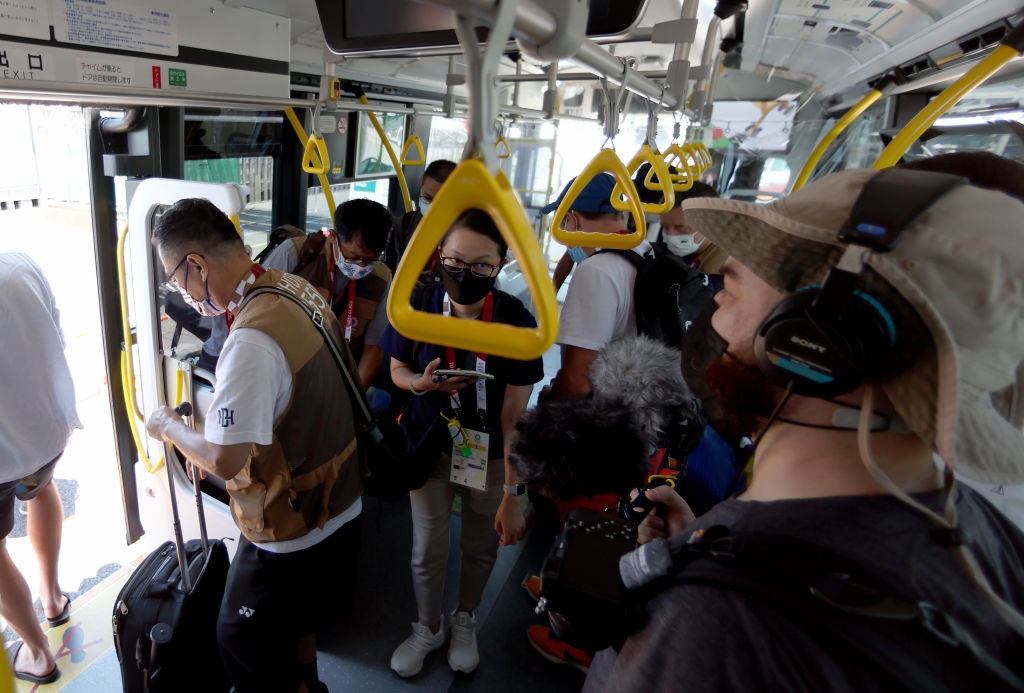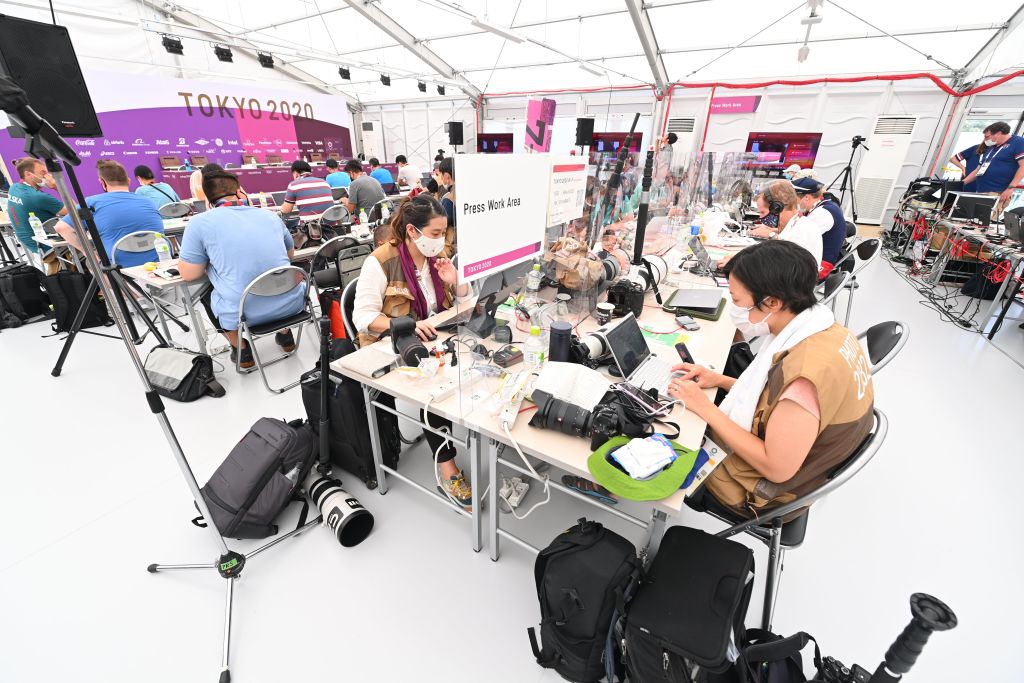Holding an Olympics during a pandemic was never going to be easy, and the Tokyo Organizing Committee consulted with numerous public health experts and invested in tracking app systems to help curb the spread of the virus within the Olympic community.
But despite these strict countermeasures, an imperfect system and practical issues in compelling thousands of people from around to world to comply with often intense and inconvenient protocols are already leading to lapses that are opening the door for SARS-CoV-2, and in particular its Delta variants, to spark new infections that could quickly flare up into clusters of cases.
For example, while the media in Tokyo are under strict testing, contract tracing and bubble measures, and are required to wear masks, there are situations that are providing potential fertile ground for the virus to spread. For the first 14 days after Olympic visitors, including athletes and journalists, arrive Tokyo, they are not allowed to take public transportation or walk in the city. But they are assigned to hotels in the city, at which non-Olympic guests are also staying. That means their rooms may be cleaned and they may be served in restaurants by Tokyo residents, who, given the low vaccination rate so far, are more than likely not immunized against COVID-19.
Athletes and media are also asked to take Olympic-only transport, which consists of buses or designated taxis that can be reserved and have been (supposedly) cleaned and cleared. Yet again, given Tokyo’s low vaccination rate, the drivers of these buses aren’t likely to be vaccinated, and return home to their families after their shifts. And in the case of Olympic buses, during those shifts, they are driving consistently packed, standing-room only, cheek to jowl rides during which it’s impossible to impose the social distancing that’s ideally required to contain COVID-19.
The Tokyo Organizing Committee did not immediately return a request for comment.

Read more: This is What Happens When an Athlete Tests Positive for COVID-19
“Even when people are wearing a mask, they have above their head and around them a growing cloud of respiratory droplets,” says David Edwards, faculty member of Harvard University in bioengineering. “People inhale 1 million to 100 million droplets a day, with 80% of those droplets being too small to settle by gravity. A bus is the classical super spread situation where you don’t get great circulation because the windows are not open.” Edwards is founder of FEND, a company that makes a nasal hygiene device that provides a mist for cleansing the upper airways to prevent disease-causing viruses from reaching deeper lung passages.
Indoor rooms are no better, says Edwards. “When 10, 20, or 30 people are breathing in a room, the cloud grows and grows. You may be wearing a mask, but that’s going to stop droplets from being inhaled into your lungs.”
What about a room with not 10, 20 or 30 people but 100, 200 or 300 people in the Main Press Center workroom, or any of the press rooms at venues, sitting less than six feet apart for hours at a time, with only plexiglass barriers between them? “Barriers are a way to add that much more distance for the droplet to travel. But there are clouds on both sides of the barrier. Barriers lower the probability of the person sitting next to you breathing out a droplet, and it lowers the probability getting in you, but it doesn’t stop the cloud effect,” says Edwards.

Same goes for the security measures at each of the venues and the main press and broadcasting centers, which require media and athletes to take off their masks and have their picture snapped at the same time that their credential, hung around their neck, is scanned by a standing kiosk machine. Because most journalists aren’t bothering to remove their credential, that means that the space in front of the camera becomes another cloud of happy respiratory droplets containing all manner of bacteria or viruses that are floating around ready to get pulled into the lungs of a new host with the next inhalation. Athletes entering the Main Press Center for press conferences are subject to the same procedures, even if they’re being asked to hang their own medals around their necks for fear of coming into close contact with medal presenters.
The only reassuring news comes from the fact that getting infected that way is a matter of both distance and time, says Edwards. The shorter time spent in the vicinity of such a cloud, the less likely the person is to get infected.
However, he and his team have found that this likelihood increases with certain variants, such as Delta, which is far more transmissible than the previous versions of SARS-CoV-2. That’s because per unit of respiratory droplet, there is more virus if it’s the Delta variant compared to the Alpha variant. “Our data suggests that there is a lot more of it in the air,” he says, which could explain why people get infected with Delta so quickly if they are around someone who is already infected.
The Tokyo Olympics infection control measures are pretty strict about preventing the importation of COVID-19 by Olympic travelers. But given that the bubbles aren’t perfect, and that the practical pressure to move thousands of journalists around in a short period of time precludes the proper social distancing, the virus is likely finding ways to keep flourishing. Health officials can only hope that intensive testing and contact tracing will pick up cases as quickly as possible to contain them.
Read more about the Tokyo Olympics:
More Must-Reads from TIME
- Donald Trump Is TIME's 2024 Person of the Year
- Why We Chose Trump as Person of the Year
- Is Intermittent Fasting Good or Bad for You?
- The 100 Must-Read Books of 2024
- The 20 Best Christmas TV Episodes
- Column: If Optimism Feels Ridiculous Now, Try Hope
- The Future of Climate Action Is Trade Policy
- Merle Bombardieri Is Helping People Make the Baby Decision
Contact us at letters@time.com